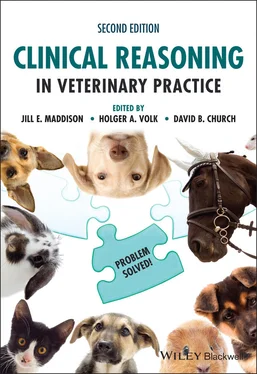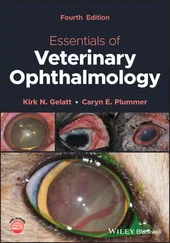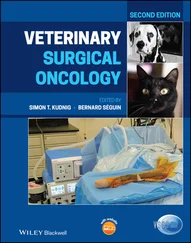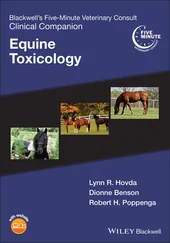Clinical Reasoning in Veterinary Practice
Здесь есть возможность читать онлайн «Clinical Reasoning in Veterinary Practice» — ознакомительный отрывок электронной книги совершенно бесплатно, а после прочтения отрывка купить полную версию. В некоторых случаях можно слушать аудио, скачать через торрент в формате fb2 и присутствует краткое содержание. Жанр: unrecognised, на английском языке. Описание произведения, (предисловие) а так же отзывы посетителей доступны на портале библиотеки ЛибКат.
- Название:Clinical Reasoning in Veterinary Practice
- Автор:
- Жанр:
- Год:неизвестен
- ISBN:нет данных
- Рейтинг книги:3 / 5. Голосов: 1
-
Избранное:Добавить в избранное
- Отзывы:
-
Ваша оценка:
- 60
- 1
- 2
- 3
- 4
- 5
Clinical Reasoning in Veterinary Practice: краткое содержание, описание и аннотация
Предлагаем к чтению аннотацию, описание, краткое содержание или предисловие (зависит от того, что написал сам автор книги «Clinical Reasoning in Veterinary Practice»). Если вы не нашли необходимую информацию о книге — напишите в комментариях, мы постараемся отыскать её.
Clinical Reasoning in Veterinary Practice: Problem Solved! 2nd Edition
Clinical Reasoning in Veterinary Practice: Problem Solved! 2nd Edition
Clinical Reasoning in Veterinary Practice — читать онлайн ознакомительный отрывок
Ниже представлен текст книги, разбитый по страницам. Система сохранения места последней прочитанной страницы, позволяет с удобством читать онлайн бесплатно книгу «Clinical Reasoning in Veterinary Practice», без необходимости каждый раз заново искать на чём Вы остановились. Поставьте закладку, и сможете в любой момент перейти на страницу, на которой закончили чтение.
Интервал:
Закладка:
Causes of regurgitation
Table 3.2 Oesphageal disorders causing regurgitation.
| Megaoesophagus | Congenital | |
| Acquired – primary GIAcquired – secondary GI | IdiopathicPolymyositisMyasthenia gravisPolyneuritisHypothyroidismHypoadrenocorticismNeoplastic neuromyopathyLead toxicityTick paralysis ( Ioxodes holycyclus ) | |
| External compression | Persistent right aortic arch | |
| Mediastinal lymphoma | ||
| Thyroid tumours | ||
| Hiatal hernia | ||
| Internal obstruction – physical or functional | Foreign body | |
| Oesophagitis | ||
| Stricture | ||
| Intra‐mural lesions | Neoplasm | For example, Spirocerca lupi in endemic areas |
| Abscess | ||
| Granuloma |
Diagnostic approach to the patient reported to be vomiting
It is imperative to carefully evaluate the history and physical examination findings for any clues that indicate whether the patient is vomiting or regurgitating and may suggest secondary or primary GI disease. You cannot always determine from the history and physical examination whether primary or secondary GI disease is most likely, but it is important that you ask yourself these questions: Is this patient vomiting or regurgitating? and Does this patient have primary or secondary GI disease or I can’t tell?, as this will assist in directing your history taking and physical examination as you search for clues to enable you to answer these key questions.
In some vomiting cases, it will be obvious that primary GI disease is most probable (e.g. the bright, happy dog that, for several days, has been vomiting consistently half an hour after eating and has no other systemic signs). Or it may be clear that secondary GI disease is most likely (e.g. the cat that has been intermittently vomiting for a week, inappetant for 4 weeks and is also polydipsic). However, often, you cannot be sure based on the history and physical, so your diagnostic procedures will be aimed initially at answering the question, What system is involved and how? You won’t always be able to answer the question initially, but it is essential that you ask it.
If indicated by the history and/or physical examination, investigate secondary GI disease with appropriate diagnostic tools such as biochemistry, haematology and urinalysis. Only a proportion of vomiting animals will require a diagnostic work‐up, but it is still important to consider whether primary or secondary GI disease is likely, as this will influence your symptomatic treatment.
As discussed earlier, the most common causes of primary GI disease, such as gastritis due to dietary indiscretion, will usually respond satisfactorily to symptomatic treatment (which should rarely, if ever, include antibiotics). However, most secondary GI disease will not, and further information is required for management and prognosis.
When is clinical pathology useful?
In general, clinical pathology is most useful for progressing our understanding about secondary GI diseases causing vomiting. In contrast, for most primary GI disease, clinical pathology tests may provide information about the systemic effects of vomiting but not about the aetiology of the gut disorder.
Even if primary GI disease is strongly suspected, it may be helpful to perform appropriate tests to assess the patient’s hydration and electrolyte/acid–base status, as prolonged and severe vomiting may cause biochemical derangements such as alkalosis or acidosis, prerenal azotaemia, hypokalaemia, hyponatraemia and hypochloraemia. Noting, however, that diagnostic procedures aimed at visualising the GI tract such as plain and/or contrast radiographs or endoscopy are more diagnostically useful in primary GI disease. Ultrasonography or exploratory laparotomy can be useful diagnostically for both primary and secondary GI disorders.
If you are unable to determine from the history and physical examination whether the animal has primary or secondary GI disease, it is cheaper, less invasive and usually quicker to investigate secondary GI disease first with appropriate tests and then investigate primary GI disease as needed if clinical pathology is normal. If there is any risk that the patient has an intestinal obstruction, then plain abdominal radiographs +/– ultrasonography should be performed as soon as possible. And if the patient has a concurrent cough, then this requires urgent investigation, as a serious disorder causing regurgitation is very possible.
When is a fuller work‐up rather than symptomatic therapy indicated?
In general practice, we obviously do not investigate every vomiting patient presented to us. Symptomatic treatment is quite appropriate if you have made an assessment that the patient is vomiting, not regurgitating and probably has primary GI disease of a transient nature such as dietary indiscretion or food intolerance. A fuller work‐up involving clinical pathology (either for diagnostic information or to assess the systemic effects of vomiting) +/− imaging is indicated if:
The patient is regurgitating
There has been no response to symptomatic therapy
Vomiting is persistent and severe
Other systemic signs are present indicating secondary GI disease, such as PU/PD and icterus
There is inappetance and/or depression that commenced well before the onset of vomiting
The patient is severely depressed
There is a palpable abnormality in the abdomen.
In conclusion
Vomiting is a common clinical sign in small animal practice. Causes range from being relatively clinically innocuous and transitory to being an indication of serious primary or secondary GI disease.
A logical approach to assessing the patient that presents with the problem of vomiting is important to ensure that the problem and system are defined correctly so that diagnostic and treatment plans are rational and justifiable.
Clinical pathology will often progress understanding of secondary GI disorders but is not usually particularly helpful in primary GI disorders where imaging of the GI tract is often more diagnostically useful.
Key points
As a result of reading this chapter you should be able to:
Appreciate the importance of differentiating regurgitating, reflux and vomiting
Understand what initiates vomiting and, hence, how different disorders cause vomiting
Appreciate the importance of determining whether vomiting is due to primary or secondary gastrointestinal disease
Develop a rational diagnostic approach to the vomiting patient and to appreciate when a diagnostic work‐up vs. symptomatic therapy is appropriate
Understand the secondary gastrointestinal causes of vomiting and the most appropriate methods of diagnosis
Review primary gastrointestinal disease processes that cause vomiting
Understand the causes and consequences of disorders of the oesophagus
Recognise the patient at risk of reflux and its consequences.
Questions for review
When is a fuller work‐up of a vomiting patient indicated as opposed to symptomatic treatment?
What clinical features of a patient would strongly suggest to you that it was vomiting because of primary gastrointestinal disease?
What clinical features of a patient would strongly suggest to you that it was vomiting because of secondary gastrointestinal disease?
Case example
‘Muriel’ is a 7‐year‐old Labrador (neutered) dog who presented with a 3–4‐week history of reduced appetite and depression. She started to intermittently vomit bile‐stained material about 2 weeks ago, and the vomiting has become much more frequent over the past week. The vomiting occurs unrelated to eating, and abdominal effort is obvious when she vomits. Prior to vomiting she appears restless and frequently licks her lips. No diarrhoea has been noted. Water intake is normal.
Читать дальшеИнтервал:
Закладка:
Похожие книги на «Clinical Reasoning in Veterinary Practice»
Представляем Вашему вниманию похожие книги на «Clinical Reasoning in Veterinary Practice» списком для выбора. Мы отобрали схожую по названию и смыслу литературу в надежде предоставить читателям больше вариантов отыскать новые, интересные, ещё непрочитанные произведения.
Обсуждение, отзывы о книге «Clinical Reasoning in Veterinary Practice» и просто собственные мнения читателей. Оставьте ваши комментарии, напишите, что Вы думаете о произведении, его смысле или главных героях. Укажите что конкретно понравилось, а что нет, и почему Вы так считаете.












